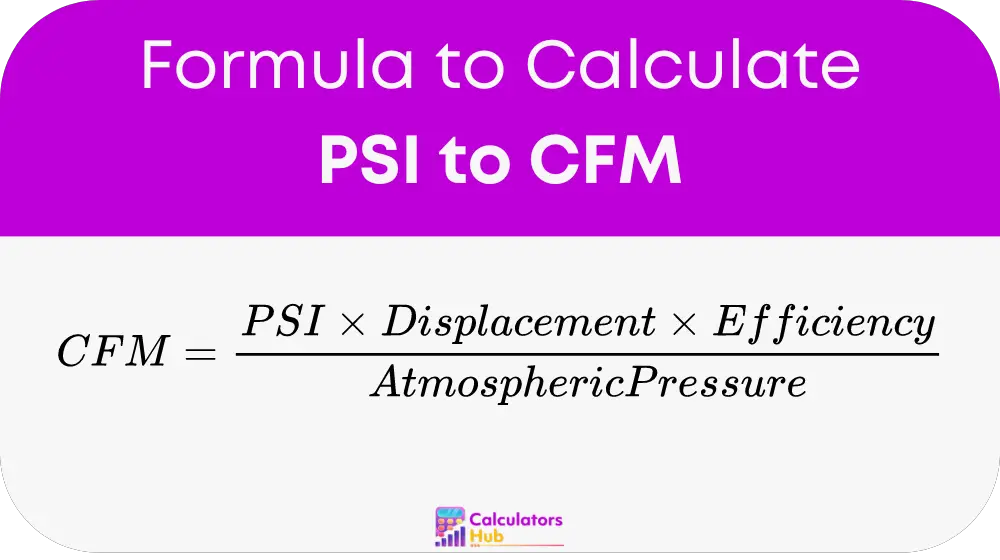The PSI to CFM Calculator is a tool designed to convert pressure (PSI) into airflow (CFM). This conversion is essential in industries that rely on compressed air, such as automotive repair, manufacturing, and construction. By using this calculator, you can ensure that your equipment operates within the required parameters, preventing damage and maintaining efficiency.
Formula of PSI to CFM Calculator
The formula to convert PSI to CFM is:

Where:
- PSI: Pressure in pounds per square inch.
- Displacement: Volume displaced by the compressor per cycle in cubic feet.
- Efficiency: Efficiency of the compressor as a decimal.
- Atmospheric Pressure: Atmospheric pressure in PSI (typically 14.7 PSI at sea level).
Conversion Table
Here is a handy table for general conversions between PSI and CFM for common scenarios:
| PSI | Displacement (cu ft) | Efficiency | CFM (at sea level) |
|---|---|---|---|
| 90 | 1.5 | 0.85 | 7.80 |
| 100 | 2.0 | 0.90 | 12.24 |
| 120 | 2.5 | 0.95 | 19.32 |
This table helps you quickly reference common conversions without the need for manual calculation.
Example of PSI to CFM Calculator
Let's go through an example to better understand how to use the formula. Suppose you have a compressor with the following specifications:
- PSI: 100
- Displacement: 2.0 cubic feet
- Efficiency: 0.90
Using the formula:
CFM = (100 * 2.0 * 0.90) / 14.7
CFM = 180 / 14.7 ≈ 12.24
So, the compressor's airflow is approximately 12.24 CFM.
Most Common FAQs
Knowing the CFM of a compressor is important because it determines the amount of airflow available for tools and equipment. This ensures that devices operate efficiently and effectively without overloading the compressor.
The displacement of a compressor can be measured by determining the volume of air it displaces per cycle. This information is usually provided in the compressor's specifications or can be calculated based on the cylinder size and stroke length.